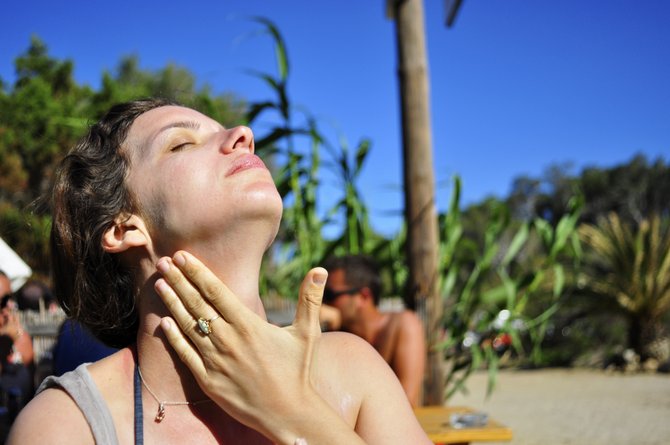With the warm weather and long days of summer finally here, people are spending more time outdoors. While many people are aware of the need to protect themselves from the sun, reducing children's exposure to the sun's harmful ultraviolet rays is especially important. In fact, teaching kids to be sun-safe now can benefit them for the rest of their lives.
The U.S. Centers for Disease Control and Prevention warns that childhood sunburns are a risk factor for skin cancer. The Skin Cancer Foundation, a non-profit devoted to skin cancer education and prevention, offers a stark warning: suffering one or more blistering sunburns in childhood or adolescence more than doubles a person's chances of developing potentially deadly melanoma later in life.
But although skin cancer can be deadly, it is also highly preventable. You can do several simple things to reduce your children's exposure to damaging UV radiation while still allowing them to enjoy the summer weather.
• Play in the shade The sun's UV rays are most intense between 10 a.m. and 4 p.m. Remind kids to play, or at least take breaks in shaded areas in order to limit UV exposure. Getting out of the sun can also reduce their risk of heat illness.
• Sun-safe swimwear Look for bathing suits that cover more skin—swim shirts, one-piece suits and long trunks come in fashionable colors and styles for both boys and girls. Many types of swimwear are now rated with an ultraviolet protection factor. The higher the UPF, the more protection they provide.
• Cover up While tightly woven clothes provide the best protection against UV rays, wearing a t-shirt in the pool and outdoors provides more protection than wearing no shirt (for boys) or a two-piece bathing suit (for girls). Wide-brimmed hats and sunglasses also help protect sensitive skin on the neck, face and around the eyes (for boys, a baseball cap is still better than no hat at all).
• Use sunscreen Teach children to apply one ounce (about the size of a golf ball) of sunscreen to all exposed areas 30 minutes before outdoor activities. Teach them to cover areas such as the back of their ears and neck and the tops of their feet and hands. Use a broad-spectrum sunscreen that protects against both UVA and UVB rays, with a SPF of 30 or higher. Reapply every two hours, especially after swimming or sweating.
• Ban the tan Like pink or burned skin, a tan is a sign of DNA damage to skin cells, a risk factor for developing skin cancer. Remind teens, especially, that tanning—whether "laying out" in the sun or using a tanning bed—increases skin cancer risk and also causes wrinkles and other skin blemishes.
• Be aware A light cloud-covering often doesn't completely block UV rays; it may only diffuse them, and it's still possible to get sunburned on a cloudy day. In addition, concrete, sand and water can all reflect the sun's rays, so reapply sunscreen any time you're outdoors during peak hours.
What's important to remember is the leading risk factor for skin cancer is exposure to UV rays, whether from the sun or a tanning bed. The more exposure you have, the higher your risk.
And because it's virtually impossible to go through life with no sun exposure, we all have some level of risk.
For more information about skin cancer risks, signs, symptoms and treatments, visit the Cancer Treatment Centers of America website at jfp.ms/skincancer.
Navneet Dhillon, MD, is a medical oncologist at Cancer Treatment Centers of America at Southeastern Regional Medical Center in Newnan, Ga. Among her clinical specialties is treating people with melanoma.
Sunburn Relief
Though it's important to protect yourself from the sun, sometimes you still may get a sunburn. In the event that this occurs, here are some treatments from WebMD.com.
• Cool cloths on areas that are affected.
• Cool showers or baths.
• Aloe vera.
• Hydrocortisone cream.



Comments